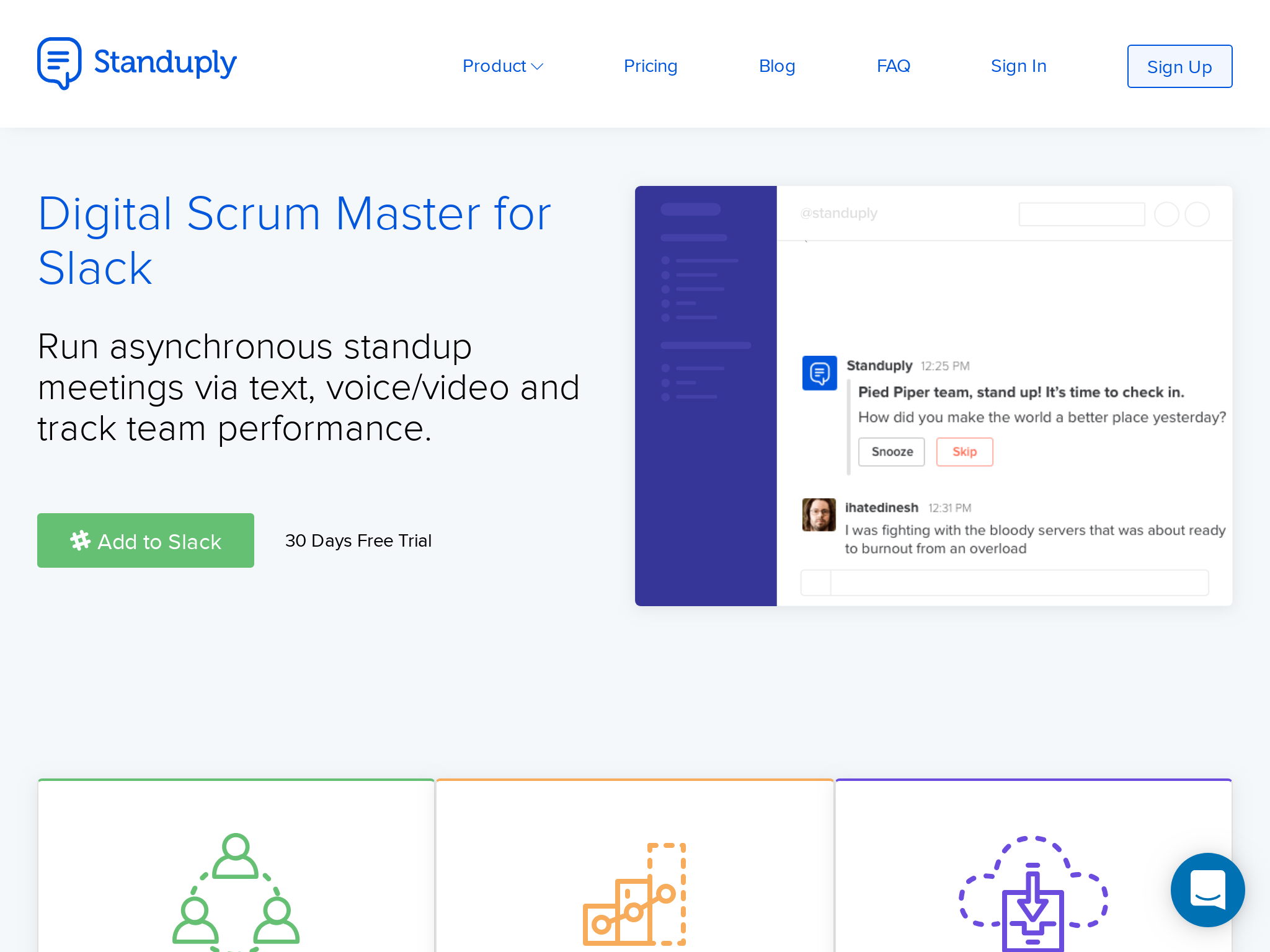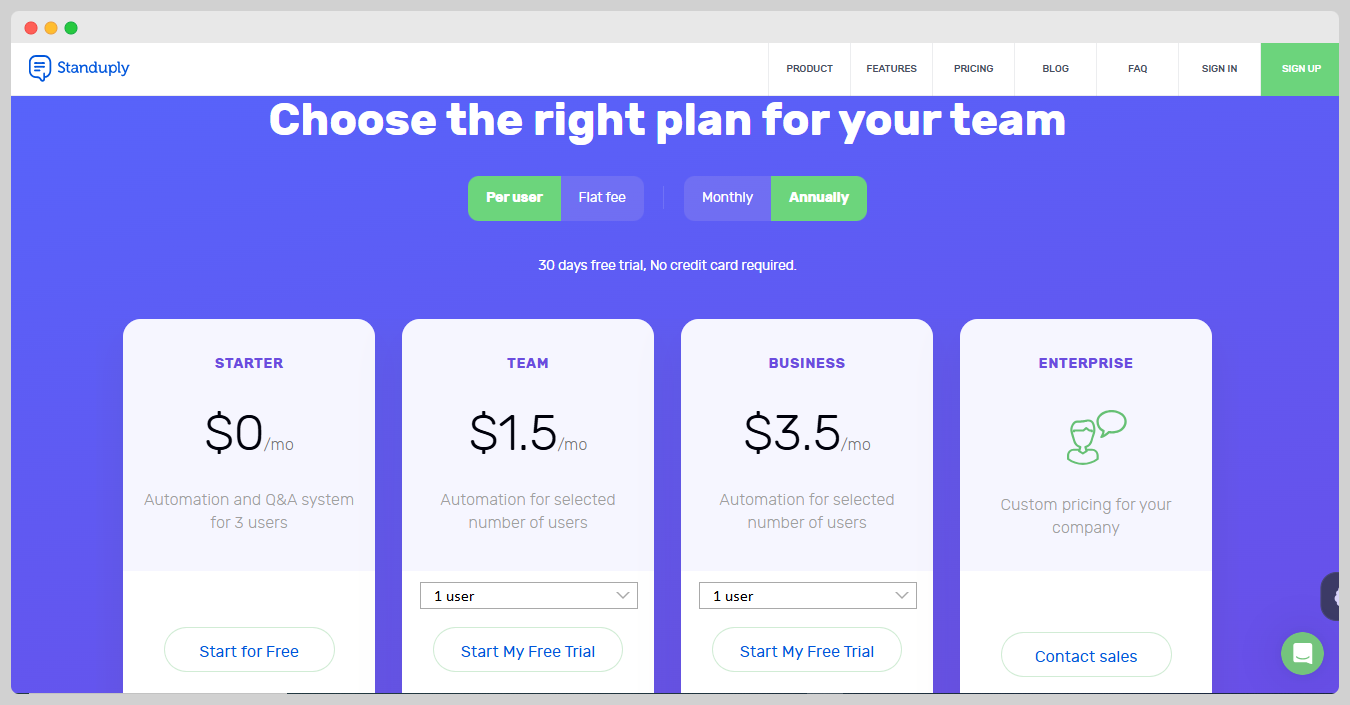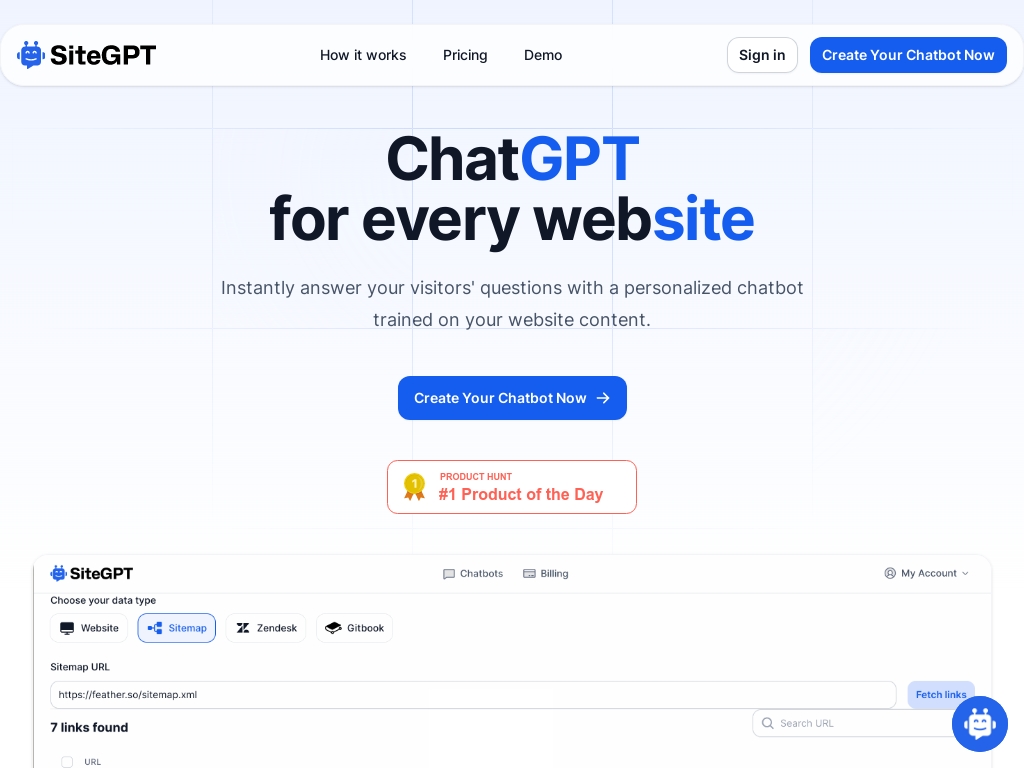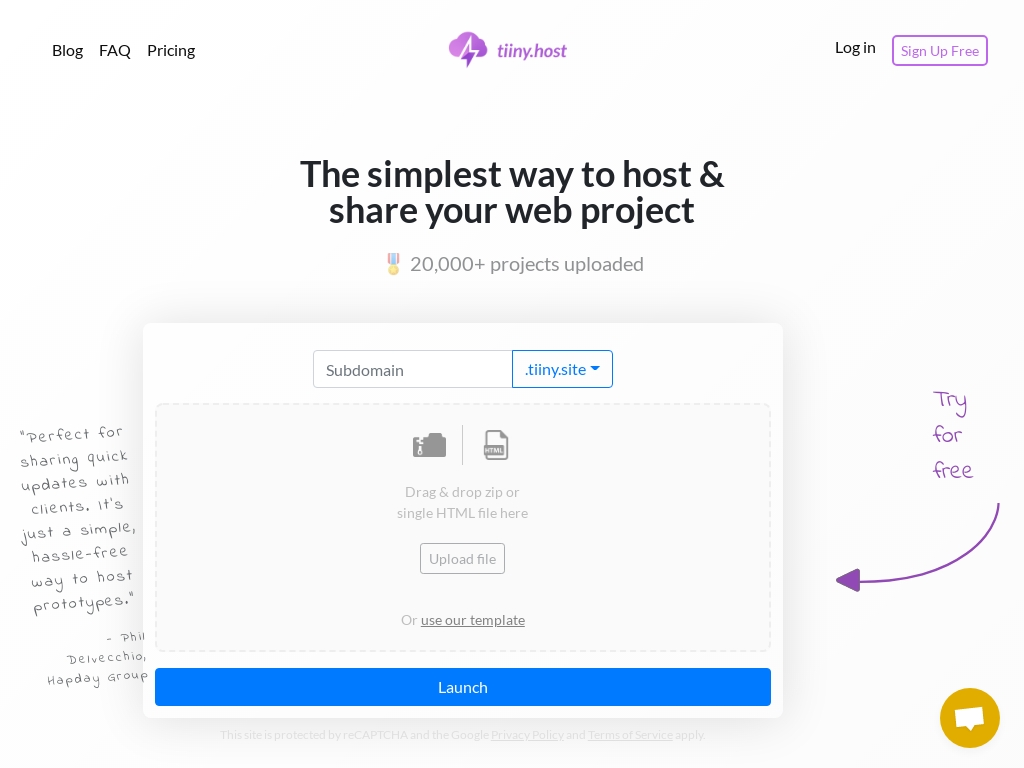
HowAlex Kistenev Bootstrapped Standuply to $80K MRR
Who is Alex Kistenev?
Standuply was co-founded by Alex Kistenev, a tech entrepreneur from Siberia, Russia, with over a decade of experience in various tech startups and projects, and Artem Borodin, a project management expert who has taught and worked in Agile environments.
What problem does Standuply solve?
Standuply solves the problem of inefficient and overly long standup meetings by providing a Slack-based digital assistant that automates these meetings, saving teams time and improving productivity.


How did Alex come up with the idea for Standuply?
After observing the frequent challenges faced by Agile teams, particularly around the complexity of maintaining efficient standup meetings and team coordination, Artem Borodin, a project management veteran, saw a gap that needed addressing. Teaming up with Alex Kistenev, they recognized that traditional methods of running meetings often fell short, especially in remote setups. As Slack was gaining popularity and the chatbot trend was on the rise, the duo saw an opportunity to create a digital Scrum Master that could facilitate these processes.
Before moving forward, they leveraged their past experience with chatbots and conducted numerous interviews to delve deeper into the pain points of target users. Despite initial setbacks with their concepts and product iterations, they gathered critical feedback and used it to refine their focus toward automating standup meetings and team surveys. Seeking further validation and refinement, they joined an acceleration program, which offered them a fresh perspective and helped crystallize their concept into what is now known as Standuply.
Throughout their ideation journey, they faced many obstacles, including skepticism towards the Scrum Master bot and technical challenges. It was through persistence, iterative feedback loops, and by embracing guidance from industry experts that they honed their business idea into a successful solution tailored to the specific needs of Agile teams.
How did Alex Kistenev build the initial version of Standuply?
Standuply's initial product development involved a rigorous and iterative process that spanned nine months in 2016. The founders, Alex Kistenev and Artem Borodin, utilized their savings and began working with a small team, heavily experimenting with the Slack bot API to build an MVP. They went through a couple of pivots, initially creating a product named SprinterBot and later ReportChef, before finally solidifying the concept as Standuply, which focused on using chatbots for automating standup meetings via Slack. The development required several rounds of prototyping and re-conceptualization, with critical input from the Startup Sauna accelerator program, which led to their sharper focus on automating standup meetings. Challenges were numerous; their infrastructure needed a complete overhaul to integrate new features like Slack buttons, which took four months instead of the planned 1.5 months, showcasing unexpected delays and technical hurdles in the early development stages.
What were the initial startup costs for Standuply?
- Bootstrapping: The founders relied on personal savings to build Standuply without external financial support.
How did Alex launch Standuply and get initial traction?
Slack App Directory Feature
Standuply was featured on the main page of the Slack App Directory in March 2017. This exposure brought them significant visibility among Slack users, leading to 750 new signups in just two weeks and reaching a milestone of 1,000 teams using their service.
Why it worked: Being featured on the Slack App Directory brought direct exposure to the exact audience that Standuply was targeting. It provided credibility and visibility within a platform where potential customers were already looking for Slack integrations like Standuply.
Product Hunt Launch
Standuply launched on Product Hunt and received attention from their tech-savvy audience. Their initial launch brought in their first users even though it wasn't top-ranked, but subsequent launches on the platform saw greater success, such as Standuply 3.0 becoming the #1 product of the day and #4 product of the week.
Why it worked: Product Hunt is a platform frequented by early adopters looking for new tech products. It provided a free way to reach potential users who were likely to be interested in Slack-enabled productivity tools. The exposure also resulted in mentions in newsletters, further extending reach.
Content Marketing & Social Media
Standuply relied heavily on content marketing from their early days. Through writing detailed blog posts and leveraging platforms like Medium, they managed to drive significant traffic to their blog. Combined with social media outreach, these strategies helped them maintain visibility and generate interest.
Why it worked: Content marketing allowed Standuply to capture the interest of their target audience by sharing valuable information, thus helping in SEO and organic reach. Social media platforms like Twitter and Reddit provided additional channels to share their content and attract more visitors to their site.
Metrics:
- Shortly after launch, the blog content had received approximately 150k views in 2017.
- Social media activities brought around 20,000 visits in an 18-month period.
These strategies collectively helped Standuply to bootstrap effectively and build a steady customer base in the early stages without significant marketing spend.
What was the growth strategy for Standuply and how did they scale?
Slack App Directory
Standuply experienced significant growth by being prominently featured in the Slack App Directory in March 2017. Within just two weeks, they acquired 750 new signups and reached a milestone of 1,000 teams. This feature not only boosted their visibility but also led to a continuous influx of new users even after the initial feature period ended.
Why it worked: The Slack App Directory serves as a crucial entry point for Slack users who are constantly seeking tools to enhance productivity. Being featured there placed Standuply directly in front of its primary audience, facilitating easy discovery and seamless integration into Slack workflows, which resulted in a steady stream of signups and users.
Content Marketing
Standuply leveraged content marketing as a key growth strategy. They published long-form content, which significantly improved their SEO ranking. Their blog posts and articles on Medium received hundreds of thousands of views, driving substantial organic traffic to their platform.
Why it worked: Consistent and high-quality content established Standuply as a thought leader in their niche, attracting a targeted audience seeking solutions for Agile practices and remote team management. This approach not only increased visibility but also engaged potential users authentically, leading to higher conversion rates.
Product Hunt Launches
Standuply took advantage of Product Hunt to gain traction and visibility. They launched Standuply and related Slack bots multiple times over two years, each launch garnering attention and new users. Notably, their best launch of Standuply 3.0 ranked #1 product of the day and #4 product of the week.
Why it worked: Product Hunt is a platform renowned for new tech products, attracting early adopters and tech enthusiasts who are keen to explore innovative solutions. Standuply’s multiple launches kept the product in the spotlight, built a reputation among a community that values innovation, and captured the interest of a tech-savvy audience.
Social Networks and SEO
Standuply expanded its reach using social networks, spreading news through platforms such as Facebook, Twitter, Hacker News, and Reddit. This approach drew around 20,000 visits in 18 months. Their content efforts also greatly enhanced SEO, directing substantial search traffic to their site.
Why it worked: Standuply skillfully utilized the viral nature of social networks and the ongoing search for digital tools among professionals to build awareness. By engaging in conversations on social media and ensuring strong SEO practices, they consistently introduced their product to a broader audience, thus facilitating sustained growth.
What's the pricing strategy for Standuply?
Standuply prices its SaaS chatbot at $1.5 to $3.5 per user per month, offering enterprise plans at a low base price for unlimited respondents.

What were the biggest lessons learned from building Standuply?
- Adapt to Change: Standuply initially struggled with its Scrum Master bot concept but pivoted to focus on standup meetings, a move that resonated with users. Being flexible and willing to pivot was key to overcoming early challenges.
- Start Small, Think Big: The founders realized the need to start with a narrow use case, like standup meetings, while planning for broader automation goals in the future. This approach helped in gradually expanding their user base and product capabilities.
- Focus on Core Features: They learned the hard way that additional features weren't as valuable as improving core functionalities that customers actually wanted and needed, which led to a more successful product.
- Analyze and Understand Your Metrics: By carefully monitoring product metrics, Standuply could avoid premature scaling, allowing them to grow steadily and make informed decisions, leading to sustainable development.
- Value Customer Feedback: Through interviews and customer feedback, Standuply was able to refine their product and strategy. Getting real customer input proved invaluable in guiding product development and ensuring relevance in the market.
Discover Similar Business Ideas Like Standuply
|
|
Idea
|
Revenue
|
|---|---|---|
|
PDFShift
|
HTML-to-PDF conversion API service.
|
$8.5K
monthly
|
|
SiteGPT
|
AI chatbot trained on your website content.
|
$15K
monthly
|
|
Hallow
|
"Catholic prayer and meditation app fostering faith growth."
|
$278K
monthly
|
|
tiiny.host
|
Static website hosting made simple for everyone.
|
$15K
monthly
|
|
Studio Wombat
|
WooCommerce plugin developer for enhanced e-commerce features.
|
$15K
monthly
|
|
Treendly
|
Trend-spotting platform for untapped market insights.
|
$1K
monthly
|
|
ScreenshotOne
|
API for capturing website screenshots easily.
|
$2.2K
monthly
|
More about Standuply:
Who is the owner of Standuply?
Alex Kistenev is the founder of Standuply.
When did Alex Kistenev start Standuply?
2016
What is Alex Kistenev's net worth?
Alex Kistenev's business makes an average of $80K/month.
How much money has Alex Kistenev made from Standuply?
Alex Kistenev started the business in 2016, and currently makes an average of $960K/year.

Download the report and join our email newsletter packed with business ideas and money-making opportunities, backed by real-life case studies.

Download the report and join our email newsletter packed with business ideas and money-making opportunities, backed by real-life case studies.

Download the report and join our email newsletter packed with business ideas and money-making opportunities, backed by real-life case studies.

Download the report and join our email newsletter packed with business ideas and money-making opportunities, backed by real-life case studies.

Download the report and join our email newsletter packed with business ideas and money-making opportunities, backed by real-life case studies.

Download the report and join our email newsletter packed with business ideas and money-making opportunities, backed by real-life case studies.

Download the report and join our email newsletter packed with business ideas and money-making opportunities, backed by real-life case studies.

Download the report and join our email newsletter packed with business ideas and money-making opportunities, backed by real-life case studies.



















